Faits divers, l'histoire à la une - Season 1

Season 1

Episodes

Roswell, l'invention des soucoupes volantes
On 8 July 1947, the US Air Force announced the discovery of a "flying disc" which had crashed in the Roswell area of New Mexico.
This was the birth of the flying saucer phenomenon. Against the backdrop of the Cold War, when conspiracy theories abounded, the myth of the UFO gradually took shape to become a recurrent theme in science-fiction movies and popular culture.

La mort de Lady Di, la presse contre la Couronne
On 31 August 1997, Princess Diana died alongside her companion, Dodi Al-Fayed, in a car crash in Paris, whilst being pursued by paparazzi.
Her untimely death prompted an outpouring of grief in Britain and elsewhere in the world, and made her a symbol of the excesses of media intrusion, that was ironically echoed in the coverage of her funeral, broadcast live around the globe.
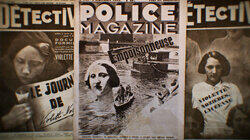
Violette Nozière, l'empoisonneuse parricide
In August 1933, Violette Nozière, 18, killed her father by poisoning in Paris.
After a short period on the run, she was charged with murder and swiftly confessed to the crime, saying her motive was that he abused her. The press and public were immediately fascinated by this patricidal teenager, who became known as "the monster in the skirt".
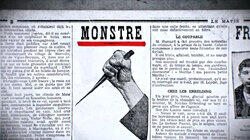
L'Affaire Soleilland, l'enfance assassinée
Paris, January 1907. Albert Soleilland is accused of the rape and murder of a little girl – Marthe. The press details every step of the case as if it was a show.
As early century France was on the verge of abolishing the death sentence, that infamous crime set the abolitionist cause back decades – the media massively and eagerly asked for his execution.

Jack l'éventreur, l'invention du serial killer
In 1888, a series of gruesome murders shocked London: The perpetrator was dubbed "Jack the Ripper".
This was the Victorian era, when puritanism reigned and forensic science was in its infancy. How did these factors combine to create one of the most renowned crime stories in history, resulting in the construction of the serial killer?

Fritz Haarmann, un vampire dans la République de Weimar
In 1924 Hanover, the discovery of a hundred bones catches the authorities' attention. The press covers the case and a suspect – Fritz Haarmann – is quickly arrested. The heinous crimes committed by the one they now call "the vampire" remind people of the Great War's traumas and announce the rise of Nazism.
Cruelty, sexual violence, cannibalism in the fragile Weimar Republic.
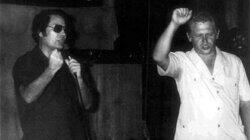
La tuerie de Jonestown, une apocalypse américaine
1978 Guyana: Reverend Jim Jones holds an apocalyptic mass. Its outcome was the sacrifice of 918 members of the Peoples Temple – an American cult founded in the middle of the 1950s.
The entire world was horrified by the journalists' accounts and the images from Jonestown. This tragedy haunted the hopes of small communities and alternative spiritualities in the 70s.
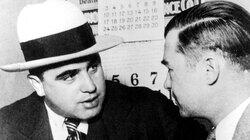
Le massacre de la Saint-Valentin, l'apogée du gangstérisme
In 1929, seven members of Bugs Moran's gang are assassinated in a garage by Al Capone's henchmen. This event was taken up by the press who named it the "Saint Valentine's day Massacre".
Carried out during the prohibition, those killings became the newsworthy symbol of gang wars – they consolidated the image of the Italian mobster in the American collective imaginary.
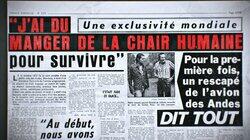
Le crash des Andes, l'inavouable anthropophagie
On October 1972, an Uruguayan plane crashed into the Andes. 72 days later, 16 survivors are found! The incredible rescue fascinated the media across the world. How did they survive?
An unspeakable truth gradually emerges: to survive, the survivors ate their dead comrades' bodies.
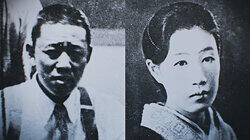
Abe Sada, un crime passionnel au Japon
On May 18th 1936, Abe Sada killed her lover by "erotic asphyxia" then cut off his member and carved his name in her flesh. In a very militarized Japan, the press was very interested in this crime with erotic and transgressive accents.
The murder has become a classic in Japanese culture; news of this crime spread a made up image of Japan – where love and sexual urges are liberated – to the West.
Recently Updated Shows
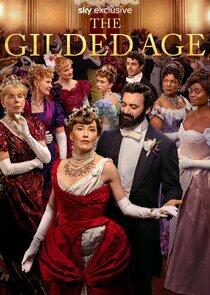
The Gilded Age
The American Gilded Age was a period of immense economic change, of huge fortunes made and lost, and the rise of disparity between old money and new.
Against this backdrop of change, the story begins in 1882 — introducing young Marian Brook, the orphaned daughter of a Union general, who moves into the New York City home of her thoroughly old money aunts Agnes van Rhijn and Ada Brook. Accompanied by Peggy Scott, an accomplished African-American woman, Marian inadvertently becomes enmeshed in a social war between one of her aunts, a scion of the old money set, and her stupendously rich neighbors, a ruthless railroad tycoon and his ambitious wife, George and Bertha Russell.
In this exciting new world that is on the brink of the modern age, will Marian follow the established rules of society, or forge her own path?

Twisted Metal
Twisted Metal is about a motor-mouthed outsider offered a chance at a better life, but only if he can successfully deliver a mysterious package across a post-apocalyptic wasteland. With the help of a trigger-happy car thief, he faces savage marauders driving vehicles of destruction and other dangers of the open road, including a deranged clown who drives an all too familiar ice cream truck.

The Librarians: The Next Chapter
The Librarians: The Next Chapter centers on Vikram Chamberlain, a "Librarian" from the past who time traveled from 1847 and now finds himself stuck in the present. When Vikram returns to his castle in Belgrade, Serbia and discovers that it is now a museum, he inadvertently releases magic across the continent. With the help of a new team of eclectic heroes, including a savant in world history, a scientific genius, and a highly skilled Guardian, Vikram has only six months to clean up the mess he made.

